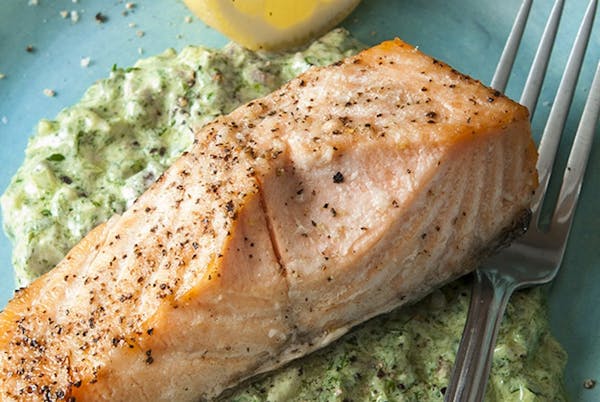Sorrel and watercress are among the first greens to appear soon after the snow has crawled to the edges of the fields and along the fast-rushing streams. Given the sudden blast of heat, our early greens are bringing us that first, welcome taste of spring. Find them at farmers markets, co-ops and grocery stores.
With its slender, pointed leaves, sorrel is a relatively easy perennial to grow, whether in the backyard or in a pot. The plant is related to rhubarb and its flavor has a lemony punch that can brighten potatoes, eggs and grains. It's wonderful in soups, stews and sauces. Heat tempers its tang and any peppery bitterness. Sorrel cooks down quickly and, unfortunately, its colors turn from their brilliant green to a drab shade of khaki, which is why I prefer it raw.
Watercress arrives around the same time as sorrel and adds plenty of peppery personality to sauces and soups. It's a relative of horseradish, with a heat that pairs nicely with tangy sorrel. Together in a sauce, their sour and peppery notes work wonders on grilled fish or pork.
As spring temperatures warm to summery heat, these plants mature, and their flavors turn more aggressive; you'll want to use them sparingly. Now, while they're young and tender, is the time to use them by the fistful.
Sorrel and watercress, alone or in combination, make a terrific filling for sandwiches of dense pumpernickel bread and tangy chèvre or cream cheese. Or, toss the leaves with a mustard dressing to serve as a side salad for grilled bratwurst or pork chops. They're terrific added to cream soups as a garnish or sautéed into a rich soup of sweet peas and cream.
Like all salad leaves, sorrel and watercress need to be thoroughly rinsed before they're used. This not only cleans them, but it also freshens their flavors. Douse them in a large bowl of very cold water. Remove and then shake them out, and dry them in a salad spinner. To dress them in a salad, use your hands to lightly coat the leaves.
Sorrel and watercress make a marvelous pesto and are good simply chopped and stirred into a good quality prepared mayonnaise. The pair's pepper and tang also make a lively yogurt sauce.
Yotam Ottolenghi offers a recipe for sorrel sauce with chard cakes in his award-winning book "Plenty." This variation includes watercress and chives with the sorrel in a vibrant tribute to spring greens. It will keep it in the refrigerator for several days, so make an extra batch or two.
Very Green Yogurt Sauce
Serves 4.
Note: This sauce is terrific with grilled fish or chicken, and also good on a baked potato, roasted vegetables or as a dip for carrot sticks or chips. Whole milk yogurt works best in this recipe. You can use a Greek yogurt with a lower fat content (2 percent, 1 percent or nonfat), but the sauce won't taste quite as full flavored or rich. From Beth Dooley.
• 1 1/2 c. sorrel leaves, washed and spun dry
• 1 c. watercress, washed and spun dry
• 1/4 c. chopped chives
• 1/4 c. parsley leaves
• 1 small garlic clove, chopped
• 1/2 c. whole milk Greek yogurt
• 1 tbsp. extra-virgin olive oil
• 1 tsp. fresh lemon juice
• Salt and freshly ground black pepper to taste
Directions
Using a sharp knife, mince together the sorrel, watercress, chives, parsley and garlic. Place in a small bowl and stir in the yogurt, olive oil, lemon juice, and salt and pepper to taste. Store in a covered container in the refrigerator for up to three days.
Nutrition information per serving:
Calories70Fat6 gSodium55 mgSaturated fat2 g
Carbohydrates3 gTotal sugars2 g
Protein2 gCholesterol10 mgDietary fiber1 g
Exchanges per serving: 1 vegetable, 1 fat.
Beth Dooley is the author of "In Winter's Kitchen." Find her at bethdooleyskitchen.com.
